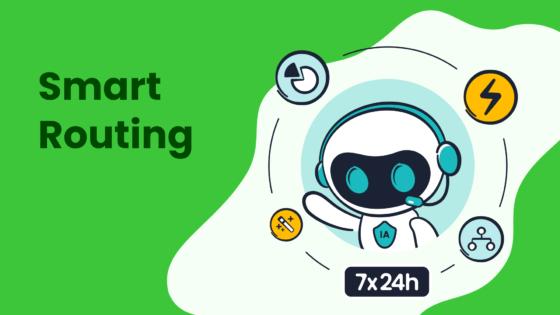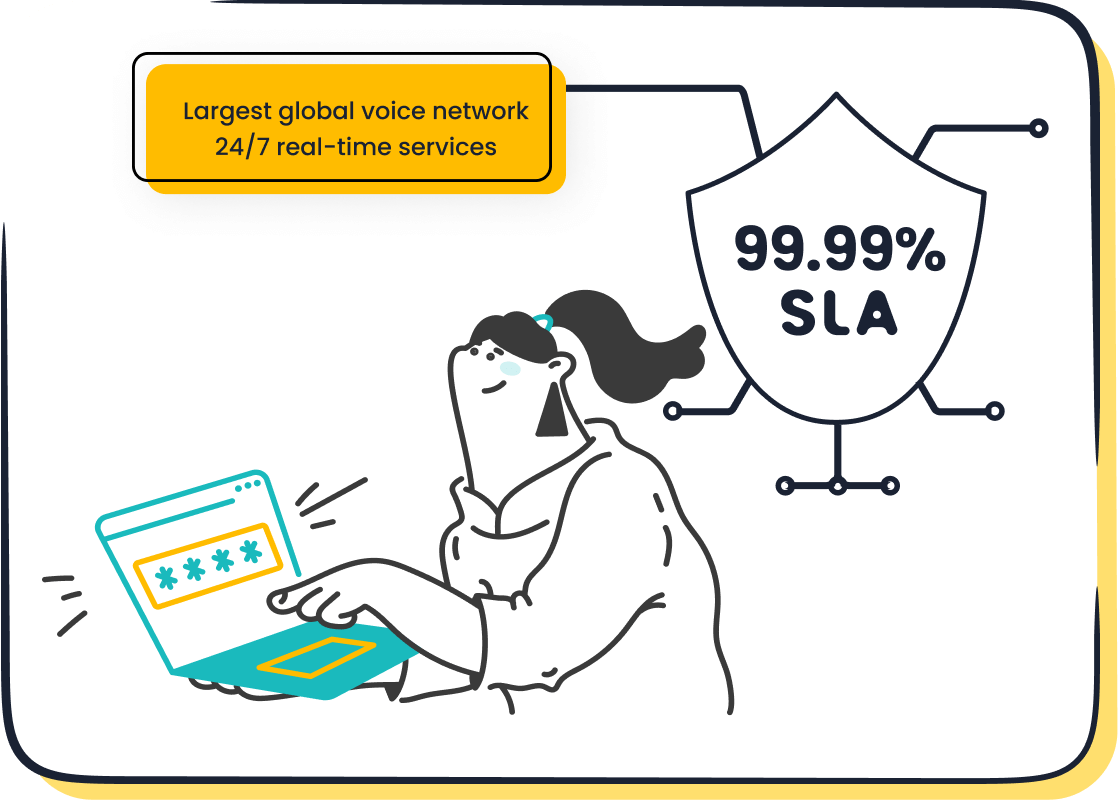Managing a Call Center: Comparing Modern and Traditional Approaches

Choosing the right approach to managing a call center shapes both customer satisfaction and operational efficiency. Business leaders often ask how management can meet rising customer expectations while supporting agents. Research shows that customer-centric management, flexible scheduling, and AI-driven tools like Sobot AI deliver strong results:
- 62% higher customer satisfaction when agent well-being improves
- 71% of customers expect no need to repeat their reason for calling
- First Call Resolution remains key, with 45% seeking answers in one interaction
Sobot call center solutions help organizations adapt to these evolving demands.
Traditional Call Center Management

Key Features
Traditional call center management relies on structured processes and established tools to handle customer interactions. Most contact centers use omnichannel support, integrating phone, email, chat, and sometimes social media. Smart call routing connects customers to the right agent or department, while customizable IVR systems guide callers through menu options. Real-time analytics and live call monitoring help supervisors track activities and maintain quality. Call recording and listening support agent training and quality assurance. Agent and supervisor workspaces provide performance metrics and tools for issue management. Integration with business tools like CRM systems and workforce management software is common. Home agent programs have become more popular, allowing agents to work remotely and maintain service levels.
Tip: Comprehensive agent training programs and ongoing coaching play a vital role in agent retention and customer satisfaction.
Strengths
Traditional call center management offers several strengths. Structured workforce planning and scheduling ensure the right number of agents are available during peak times. Defined team roles, including agents, team leaders, and quality assurance teams, support smooth operations. Performance management uses metrics and KPIs to track customer service and agent productivity. Proactive performance management enables supervisors to take immediate action based on real-time insights. AI-enabled coaching and unified data hubs help improve agent retention and continuous optimization. Home agent programs also provide flexibility, supporting agent retention and business continuity. These call center best practices help balance customer service quality, agent satisfaction, and cost control.
Limitations
Despite its strengths, traditional call center management faces several limitations:
- Inconsistent transaction handling can lead to uneven customer experiences.
- Ineffective communication from leadership causes confusion and errors.
- Inadequate training leaves agents unprepared for complex issues.
- Limited growth opportunities reduce agent motivation.
- Micromanagement disrupts trust and lowers performance.
- Resistance to new technology slows progress.
- Transactional, scripted interactions often feel impersonal, reducing customer satisfaction and loyalty.
Traditional contact centers often focus on efficiency and quick resolution, sometimes at the expense of meaningful engagement. This approach can make customers feel unimportant and limit opportunities for deeper relationships.
Modern Call Center Solutions

Technology and Automation
Modern call center solutions use advanced technology and automation to improve efficiency and customer satisfaction. Over the past five years, the adoption of AI-powered tools in the contact center industry has grown rapidly. For example, the use of interaction and speech analytics increased from 28% in 2022 to 37.5% in 2023. Many call centers now use automation for quality assurance, real-time support, and predictive service. Virtual assistants like Bank of America's 'Erica' have handled hundreds of millions of inquiries, showing how automation can transform customer interactions.
Common technologies in modern call centers include:
- Interactive Voice Response (IVR) systems for automated call routing
- Robotic Process Automation (RPA) for repetitive tasks
- Chatbots and AI-powered virtual assistants for instant responses
- Automatic Call Distribution (ACD) for smart routing
- Sentiment analysis and natural language processing for better understanding
- Analytics and reporting tools for data-driven decisions
These tools help agents focus on complex issues and improve the overall customer experience.
Omnichannel Support
Modern contact centers offer omnichannel capabilities, allowing customers to reach out through email, live chat, SMS, social media, and messaging apps. This approach meets the demand for multiple contact options and ensures seamless service across channels. Unlike traditional centers, modern solutions use CRM integrations to access customer history and personalize interactions. Omnichannel support improves engagement by making each interaction more relevant and efficient. AI-powered cloud call centers automate routine tasks and enable smooth transitions between automated and live agent support, reducing wait times and increasing satisfaction.
Sobot Voice/Call Center

Sobot stands out as a leading provider of modern call center solutions. Its Voice/Call Center product supports both inbound and outbound calls with features like intelligent IVR, AI-powered Voicebot, unified workspace, and advanced analytics. Sobot offers global phone number resources in over 100 countries and ensures 99.99% system uptime. The platform integrates easily with CRM and ERP systems, allowing agents to manage interactions efficiently. Sobot’s achievements include recognition as a WhatsApp Business Solution Provider and selection for the Capterra Shortlist in the contact center category for 2025. With a large customer base and proven system stability, Sobot helps businesses improve reception efficiency, reduce handle time, and increase first-contact resolution.
Managing a Call Center: Key Differences
Communication Channels
Communication channels form the backbone of any call center strategy. Traditional call centers rely almost exclusively on voice calls, using legacy phone systems to manage inbound and outbound interactions. This approach limits customer options and often leads to siloed communication, making it difficult for agents to maintain context across multiple interactions.
Modern contact centers have transformed the landscape by supporting a wide range of communication channels. These include email, SMS, live chat, social media messaging, WhatsApp, and even video calls. Agents can switch between channels seamlessly, maintaining full context and delivering a unified experience. Customers benefit from flexible options, choosing their preferred method of contact and switching channels without losing information. This omnichannel support strategy meets rising customer expectations for convenience and personalization.
Note: Integrated platforms allow agents to access customer history and data from CRM systems, ensuring every interaction is informed and efficient.
Key differences in communication channels:
- Traditional call centers: Voice-only communication, limited flexibility.
- Modern contact centers: Multichannel support including email, SMS, chat, social media, and mobile apps.
- Omnichannel engagement: Agents maintain conversation context across channels, improving customer satisfaction.
- Seamless communication: Customers switch channels during interactions, enhancing flexibility and satisfaction.
- Integration: Modern contact centers connect with CRM, AI, and analytics platforms for better data management.
Customer Experience
Customer experience stands at the center of managing a call center. Traditional call centers often focus on efficiency and quick resolution, sometimes at the expense of meaningful engagement. Scripted interactions and limited personalization can make customers feel undervalued. Home agent programs in traditional models provide some flexibility, but they rarely address the need for tailored service.
Modern contact centers prioritize customer satisfaction by leveraging technology and data. AI-powered tools analyze interactions in real time, enabling agents to deliver personalized responses. Omnichannel support ensures customers receive consistent service regardless of the channel they choose. For example, a customer might start an inquiry via live chat and continue it over the phone, with the agent retaining full context. This approach meets customer expectations for fast, relevant, and empathetic service.
Contact centers also use analytics to monitor customer sentiment and identify areas for improvement. Automated systems handle routine inquiries, freeing human agents to focus on complex issues that require empathy and expertise. Home agent programs in modern contact centers offer staffing flexibility, allowing organizations to scale support teams based on demand and maintain high service levels.
Tip: Businesses should align their support strategy with customer expectations, using data-driven insights to enhance every interaction.
Scalability and Cost
Scalability and cost represent critical factors in call center management. Traditional call centers face significant challenges when scaling operations. Expanding capacity often requires additional physical infrastructure, specialized IT support, and lengthy deployment times. High upfront investments and ongoing maintenance costs add to the burden, making rapid growth difficult.
Modern contact centers offer scalable solutions through cloud-based platforms and AI automation. Organizations can deploy new features and expand capacity within days or weeks, avoiding the delays associated with traditional systems. Consumption-based pricing models reduce operational expenses, with AI handling up to 85% of routine inquiries. This automation allows businesses to manage spikes in call volume without hiring extra staff.
| Feature | Modern No-Code Call Center Solutions | Traditional Call Center Systems |
|---|---|---|
| Scalability | Easily scalable with rapid deployment and lower costs | Difficult to scale; requires additional resources and specialized IT support |
| Deployment Speed | Rapid (days to weeks) | Lengthy (3-6 months) |
| Cost | Lower upfront and subscription-based | High initial investment and ongoing maintenance costs |
| Customization | Good but limited for complex cases | Highly customizable with unlimited flexibility |
| Accessibility | Easy to use, no coding expertise required | Complex, requires coding expertise |
Modern contact centers eliminate many overhead costs, such as recruitment, training, and physical infrastructure. AI-powered systems operate 24/7, providing consistent quality without overtime premiums. Organizations report up to 70% reductions in operational costs and 42% lower expenses through intelligent automation. Case studies show that AI implementations can reduce per-interaction costs by over 65%, with some businesses achieving up to 82% cost reduction while improving customer satisfaction.
Callout: Cloud-based contact centers support remote work and home agent programs, enabling staffing flexibility and business continuity.
Managing a call center today requires a strategy that balances communication channels, customer experience, and scalable solutions. Modern contact centers deliver seamless communication, personalized interactions, and cost-effective scalability, helping organizations meet evolving customer expectations and achieve higher satisfaction.
Customer Service Excellence
Personalization
Personalization stands as a cornerstone of modern customer service. Brands that excel in personalization see a 71% increase in customer loyalty, according to a 2024 Deloitte Digital report. Agents who access customer history and preferences can anticipate needs and tailor responses, reducing the need for customers to repeat themselves. This approach leads to higher first contact resolution rates, which directly impacts retention. Customer insights from analytics tools help agents deliver personalized experiences, making each interaction feel unique and valued. Proactive engagement, powered by conversational analytics, allows teams to address dissatisfaction early and prevent churn. Personalization not only builds trust but also differentiates a brand in a crowded market.
Efficiency and Satisfaction
Efficiency and satisfaction drive the success of any customer service operation. Leading call centers track metrics such as Average Handle Time (AHT), Customer Satisfaction Score (CSAT), Net Promoter Score (NPS), and First Call Resolution (FCR) to monitor performance. The table below highlights key metrics:
| Metric | Purpose / Insight |
|---|---|
| Average Handle Time (AHT) | Measures time spent per call, balancing speed and quality. |
| Customer Satisfaction Score (CSAT) | Gauges satisfaction after each interaction. |
| Net Promoter Score (NPS) | Assesses loyalty and likelihood to recommend. |
| First Call Resolution (FCR) | Tracks the percentage of issues resolved on the first contact. |
High FCR and CSAT scores indicate frictionless support and a positive customer journey. Efficient operations also reduce costs and improve agent morale.
Sobot Omnichannel Solution
Sobot’s Omnichannel Solution transforms customer service by unifying all channels—voice, chat, email, and social media—into a single workspace. AI chatbots handle routine inquiries 24/7, freeing agents to focus on complex issues. Advanced analytics provide real-time insights, enabling continuous improvement. Major brands like OPPO have seen remarkable results after adopting Sobot. OPPO achieved a 30% increase in customer satisfaction and a 25% reduction in churn. Predictive analytics helped OPPO identify at-risk customers, while conversational AI delivered personalized recommendations across channels. Sobot’s platform ensures consistent, efficient, and personalized customer service, supporting every stage of the customer journey.
Choosing the Right Approach
Business Needs
Every organization must align its call center management with its unique business needs. Companies often focus on managing people, processes, technology, and customers to create a strategy that supports growth and customer loyalty. For example, hiring agents with the right skills reduces training time and improves performance. Gathering customer feedback helps the call center adapt to changing customer needs. When businesses prioritize agent feedback, they can identify workflow problems and improve operations. Aligning recruitment, training, and daily adjustments with business goals ensures the call center operates as a strategic asset. This approach supports personalized customer experiences and drives revenue growth.
Industry Fit
Different industries require different call center solutions. Modern call center technologies benefit sectors like finance, retail, and consumer services by automating routine tasks and enabling seamless omnichannel support. These industries see higher customer satisfaction and loyalty when agents use real-time analytics and personalized communication. The table below compares how traditional, AI, and hybrid call centers fit various industry requirements:
| Factor | Traditional Call Centers | AI Call Centers | Hybrid Models |
|---|---|---|---|
| Industry Requirements | Empathy, complex handling | Routine, scalable | Tailored solutions |
| Customer Needs | Personal, empathetic service | Quick, 24/7 responses | AI for simple, humans for complex |
| Scalability | Difficult to scale | Easily scalable | Efficient scaling with quality |
| Cost Implications | High operational costs | Lower costs | Balanced cost and quality |
Financial institutions and retail businesses often choose modern or hybrid models to meet high customer expectations and manage large volumes efficiently.
Transition Steps
Transitioning from a traditional to a modern call center involves several key steps:
- Upgrade digital infrastructure to cloud-based platforms for flexibility and scalability.
- Integrate CRM systems to centralize customer data and streamline agent workflows.
- Adopt AI-powered automation for routine inquiries and 24/7 service.
- Provide continuous training to help agents adapt to new tools and processes.
- Use analytics to monitor performance and guide improvements.
- Enable omnichannel support so customers can reach the business through their preferred channels.
Organizations may face challenges such as technology integration, employee resistance, and data security concerns. Addressing these issues with strong training programs and a culture of innovation helps ensure a smooth transition.
| Aspect | Traditional Call Center | Modern Call Center (CCaaS) |
|---|---|---|
| Technology | On-premise hardware | Cloud-based software |
| Channel Support | Voice only | Omnichannel (voice, chat, email) |
| Scalability | Limited | Elastic, fast deployment |
| Analytics | Basic | Real-time, AI-powered |
Modern call center management offers flexibility, scalability, and better customer experiences. Companies that align management with business needs see higher satisfaction and retention. To improve service, organizations can explore Sobot’s AI-powered solutions and regularly review strategies as technology and customer expectations change.
FAQ
What are the main benefits of using a modern call center solution like Sobot?
Sobot’s modern call center solution improves efficiency, supports omnichannel communication, and uses AI to automate routine tasks. Businesses report up to 70% lower operational costs and higher customer satisfaction scores after switching to Sobot’s platform.
How does Sobot ensure data security and system reliability?
Sobot maintains 99.99% system uptime and uses encrypted data transfer for all communications. The platform supports global compliance standards, protecting customer information and ensuring reliable service for over 10,000 brands worldwide.
Can Sobot integrate with existing CRM or business systems?
Sobot offers seamless integration with popular CRM systems such as Salesforce and Shopify. The unified workspace allows agents to access customer data instantly, improving workflow and enabling personalized service across all channels.
What industries benefit most from Sobot’s call center solutions?
Retail, finance, gaming, education, and enterprise services see strong results with Sobot. For example, OPPO improved its chatbot resolution rate to 83% and increased repurchase rates by 57% after adopting Sobot’s omnichannel solution.
How does Sobot support remote and global teams?
Sobot’s cloud-based platform enables agents to work from anywhere, supporting remote and global teams. The system provides access to phone numbers in over 100 countries and offers mobile compatibility for Android and iOS devices.
See Also
Top Strategies For Managing Quality In Call Centers
Comprehensive Overview Of Call Center Quality Management Systems
Understanding The Efficient Operation Of Call Center Automation
Essential Insights Into Omnichannel Software For Call Centers
Effective Ways To Enhance Call Center Performance Through Monitoring
